Loire Valley Wines Come Clean
Chapter Sixteen. Part Eleven.
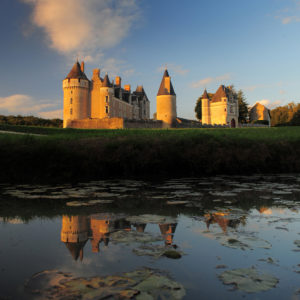
© 2014 Léonard de Serre, ADT Touraine
In my last article (and by article I mean rant) I wrote about the popularity of “formulaic recipe wines that use additives and sugar to add weight and mask off flavors”, but today I’m here to tell you there are many wine regions where the dry wine “recipe” does not include residual sugar or the additive mega-purple.
For years families in the Loire Valley have been crafting honest wines using techniques passed down from generation to generation. This vast French wine region surrounds the Loire River as it stretches westward for over 600 miles from its source in the Massif Central to its mouth at the Atlantic Ocean. This lengthy waterway may pale in comparison to the mighty Amazon River but on the bright side the French don’t have to fend off man-eating piranhas.
Read MoreWhat’s In a Burgundy?
Chapter Sixteen. Part Eight.
Real Conversation Overheard in a Fine Wine Store:
CUSTOMER: Can you recommend a Chardonnay to go with pan-seared scallops?
ME: I highly recommend this Pouilly-Fuissé from Burgundy.
CUSTOMER: But I asked for Chardonnay.
ME: Yes, white Burgundy is made from Chardonnay.
CUSTOMER: White Burgundy? I thought you were a wine expert. Everybody knows Burgundy is red. Why do you think it’s called Burgundy?
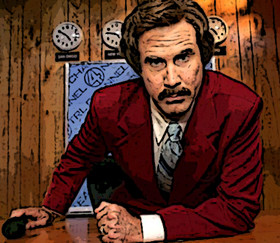
“I’m very important. I have many leather-bound books and my apartment smells of rich mahogany.” – Ron Burgundy
As the customer turned to leave it dawned on me that in many circles Burgundy is synonymous with world-class Chardonnay and Pinot Noir, and in other circles people are a stupid pain in the ass.
It’s understandable that most Americans don’t know what’s inside a Burgundy bottle because so many things bear the Burgundy name. First there’s the place Burgundy, then there’s the wine Burgundy, of course there’s the color Burgundy, and most famously there’s anchorman Ron Burgundy.
Read More“Terroir Don’t Mean S_ _ _!”
Chapter Eleven. Part Five.
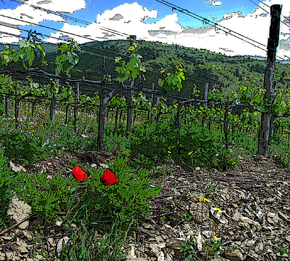 When it comes to the unique “sense of place” that makes wine regions unique, most wine professionals have a tendency to take terroir for granite. But there is one influential wine professional who claims terroir is nothing more than the emperor’s new clothes, a cunning contrivance to keep wine on a pedestal and inflate prices.
When it comes to the unique “sense of place” that makes wine regions unique, most wine professionals have a tendency to take terroir for granite. But there is one influential wine professional who claims terroir is nothing more than the emperor’s new clothes, a cunning contrivance to keep wine on a pedestal and inflate prices.
Fred Franzia, the man behind Bronco Wine Company, California’s fourth largest winery, is often at odds with those who preach the gospel of terroir, people I call terroirists. In 2010 Franzia wrote on his Facebook page,
Does anybody complicate Cheerios by saying the wheat¹ has to be grown on the side of a mountain and the terroir in North Dakota is better than Kansas and all this horse s- – -?²
Read MoreTerroir; Between Medoc & A Hard Place.
Chapter Eleven. Part Four.
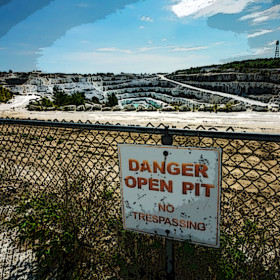 Mineral is one of the terms often used when describing old-world wines. Whether it is perceived as graphite or clay in young red wines from the Medoc or as chalky limestone in Loire Valley whites, minerality often finds its way into wine. I’d like to tell you the romantic tale of how I discovered this important facet of terroir when I was travelling through the vineyards of France, but then I’d be lying.
Mineral is one of the terms often used when describing old-world wines. Whether it is perceived as graphite or clay in young red wines from the Medoc or as chalky limestone in Loire Valley whites, minerality often finds its way into wine. I’d like to tell you the romantic tale of how I discovered this important facet of terroir when I was travelling through the vineyards of France, but then I’d be lying.
I learned about minerality as a trespassing juvenile delinquent in the cornfields west of Chicago. These cornfields were littered with abandoned stone quarries that – once the water table had been breached – filled with crystalline spring water. The resulting oasis was a welcome relief from the oppressive Illinois heat, providing you were willing to ignore the threatening signs and climb a chain link fence.
Read MoreTerroir; From Great Vines Come Great Wines.
Chapter Eleven. Part Three.
Gerald Asher, A Vineyard in My Glass
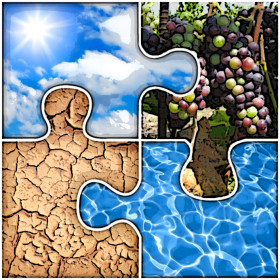 There’s an expression among winemakers that says, “95% of every wine is made in the vineyard.” This simply means that despite the best efforts of man to manipulate wine, its quality ultimately depends on the grapes they start with. Unless of course man takes his 5% and really screws things up, in which case he’ll remind us that 95% of the wine is made in the vineyard. And in case you’re wondering, that’s the vineyard where sour grapes come from.
There’s an expression among winemakers that says, “95% of every wine is made in the vineyard.” This simply means that despite the best efforts of man to manipulate wine, its quality ultimately depends on the grapes they start with. Unless of course man takes his 5% and really screws things up, in which case he’ll remind us that 95% of the wine is made in the vineyard. And in case you’re wondering, that’s the vineyard where sour grapes come from.




















